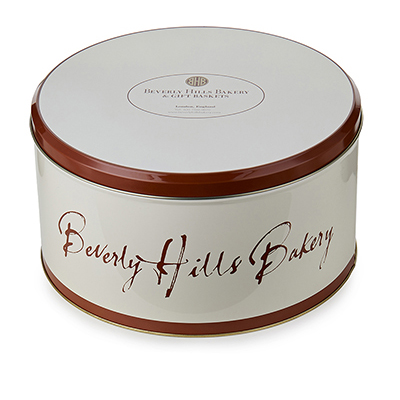Elevating Brand Identity Through Custom Tin Packaging
The Art of Tin: Elevating Brand Identity Through Custom Packaging
In an increasingly competitive market, brands are constantly seeking unique ways to stand out on shelves and in the minds of consumers. Custom tin packaging has emerged as a sophisticated solution, offering not only durability and protection for products but also a canvas for creative expression. Tin’s versatile nature allows for high-quality printing and intricate embossing, making it an ideal material for brands looking to elevate their identity and leave a lasting impression.
The use of custom tins for packaging extends beyond simple aesthetics; it plays a pivotal role in brand recognition and customer experience. A well-designed tin can convey a brand’s ethos, whether it’s luxury, eco-friendliness, or innovation, and can be repurposed, which encourages ongoing engagement with the brand. As consumers become more discerning, the tactile and visual appeal of tin packaging can significantly influence their purchasing decisions.
Moreover, the sustainability of tin packaging speaks volumes about a brand’s commitment to environmental responsibility. Tin is recyclable and can be reused indefinitely without loss of quality, aligning with the growing consumer demand for sustainable packaging options. Brands leveraging tin’s unique properties can foster a strong, eco-conscious image, enhancing their reputation and customer loyalty over time.
Defining Tin Packaging
Tin packaging refers to containers made primarily of tinplate, which is steel coated with a thin layer of tin. This packaging method has a storied history and offers distinct material properties beneficial for preserving and presenting products.
Historical Context
Tinplate was first patented in the 17th century and has since been integral in the development of packaging. Originally valued for its corrosion resistance, tin packaging became mass-produced following the invention of the canning process. By the 19th century, it had become a staple for long-term food storage, leading to the growth of a global canned food market.
Material Characteristics
Durability: Tinplate’s sturdy nature protects products from damage and external contaminants.
Non-Reactivity: The material does not react chemically with food and beverages, preventing spoilage and maintaining flavor integrity.
Malleability: Despite its strength, tin can be easily shaped, embossed, and printed upon, providing ample opportunities for brand customization.
Recyclability: Tin packaging can be recycled an infinite number of times without loss of quality, making it an environmentally responsible choice for conscious brands.
Branding with Tin
Choosing tin packaging for products not only preserves the contents but also serves as an effective marketing tool that can enhance a brand’s identity.
Visual Appeal
Custom tin packaging is aesthetically pleasing and commands attention on retail shelves. Brands can exploit the lustrous finish and distinctive metallic sheen that tin provides, offering a premium look. The ability to emboss designs directly onto the surface adds a tactile experience, further contributing to the visual impact.
Customization Potential
The options for customizing tin packaging are extensive. Brands can leverage full-color printing and intricate embossing to tailor the design. From choosing unique shapes for the tin containers to incorporating brand-specific elements like logos and color schemes, the level of personalization is significant. A custom tin design can integrate seamlessly with a brand’s existing marketing efforts, reinforcing brand recognition.
| Shape | Description |
|---|---|
| Rectangular | Classic shape, suitable for a variety of products |
| Round | Ideal for products that can be rolled or stacked |
| Specialized | Can be designed to match product or brand theme |
Sustainability Message
Tin is a sustainable packaging choice and highly recyclable, which can resonate with eco-conscious consumers. By using tin, companies communicate a commitment to environmental responsibility. A clear sustainability message can be a crucial part of a brand’s identity, especially when consumers are increasingly aware of ecological issues. A focus on sustainability can foster brand loyalty and positive consumer perceptions.
Case Studies of Successful Tin Packaging
Harney & Sons Fine Teas: Renowned for its high-quality teas, Harney & Sons opted for distinctive tin packaging that not only preserves the flavor but also conveys luxury. The ornate designs and solid construction appeal to consumers seeking both taste and aesthetic.
- Impact: Increased shelf visibility and reinforced brand elegance.
- Consumer Response: Elevated perceived value and collectability.
Fortnum & Mason: This British retailer has been leveraging tin packaging for their teas and biscuits, creating iconic, reusable tins that become keepsakes. The design reflects their heritage and commitment to quality.
- Impact: Enhanced brand recognition and customer loyalty.
- Consumer Response: Positive engagement with repeat purchases as collectors’ items.
Crayola Crayons: The use of tin packaging for special edition crayon sets gave a nostalgic and premium feel to a classic product. Crayola’s vibrant tins stood out on shelves, attracting both children and adult collectors.
- Impact: Differentiation from competitors; increased perceived value.
- Consumer Response: Strong sales driven by limited edition appeal.
Altoids: With its signature small, rectangular tin, Altoids has created a lasting impression as the “curiously strong mint.” The consistent look of their packaging is instantly recognizable and functional.
- Impact: Created a classic, brand-defining look that’s influenced pop culture.
- Consumer Response: Brand loyalty and the tins’ repurposing for personal use.
Optimizing Tin Packaging for Brand Identity
Custom tin packaging serves as a canvas for brands to communicate their identity and values effectively.
Design Strategies
In crafting tin packaging, the emphasis on brand identity is achieved through meticulous design elements. Color schemes should align with the brand’s palette to foster brand recognition. Utilizing high-resolution imagery and logos on tins creates a visual representation of the company that resonates with consumers.
Material and Finish:
- Matte: Non-reflective, sophisticated appeal.
- Gloss: Eye-catching, high-shine surface.
- Embossing: Adds texture and a tactile experience.
Shapes and Sizes:
- Rectangular or square tins for standard packaging.
- Unique forms such as cylinders or irregular shapes for brand distinction.
Navigating Challenges
The production process may present certain obstacles. Cost efficiency is balanced against bespoke packaging solutions. It’s practical to standardize certain elements like sizes or materials to control expenses.
Regulations and Compliance:
- Food-grade coatings for consumables.
- Child-resistant mechanisms where required.
Logistics and Durability:
- Ensuring the packaging is robust enough for transit.
- Lightweight designs to reduce shipping costs.





Leave a Reply
Want to join the discussion?Feel free to contribute!